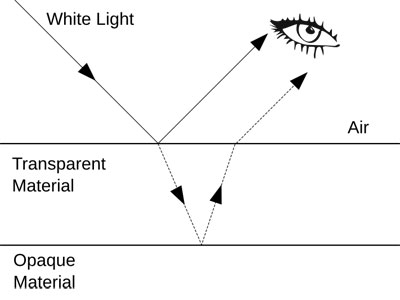
This is concluded by a Scientist called Snell, therefore it is also called Snell’s law. This constant is known as the refractive index. The ratio of Sin of the angle of incidence and sin of the angle of refraction is equal to constant.The incident ray, refracted ray and normal ray at the point of incident lie in the same plane.Lenses, Prisms are examples of refraction. The change of direction and speed of light as it enters from one medium to another is called the refraction of light. Read Also: Examples of reflection of light What is the refraction of light? All the non-luminous objects are visible due to irregular reflection.Transparent substances having many phases are used as decoration pieces and in jewelry shine too much due to irregular reflection.We are able to get light for sometime before the sunrise and after the sunset.Due to irregular reflection, the rays of light are able to reach at those places where rays of light cannot reach normally.Although this has been only a surface look at diffraction, I’m hoping deeper inquiry into it as critical and creative practice might be useful in considering discretenesses of difference that don’t calcify into fixity. The proliferation of pronouns in the first two lines of “Matter”, and the deictic now (“It separates everything you were from what happens now”), plot an entanglement of identity and temporality. The first line of the poem, “We call change in a person the effect of time” (18), shortens the first line of “A Placebo” (13), setting up a larger concatenation of difference in the book as a whole. The poem “Matter” approaches and re-approaches “the effect of time” and ideas of separateness, closeness, through minerals, quantum bonds, and “change in a person,” seeming to map the effects of difference through the diffraction grating of the poem. Perception and natural phenomena touch, exist contiguously, interfere. With her longer line and use of parataxis, there’s a refusal to level out ambiguity. Hello, the Roses foregrounds entanglements of subject and object within the relational interchange of phenomena. A diffraction pattern does not map where differences appear, but rather maps where the effects of differences appear.” I’m still trying to understand diffraction as a critical practice, but want to venture, and further consider, how Berssenbrugge’s poetry might function as a diffractive creative practice, as a mapping of interference in language.

Diffraction is a mapping of interference, not of replication, reflection, or reproduction. For Barad, through Haraway: “Diffraction does not produce ‘the same’ displaced, as reflection and refraction do. Barad’s interested in the use of diffraction, over and in place of reflection and refraction, for its potential as what she calls a “mutated critical tool of analysis.” She traces a lineage through the work of Donna Haraway and Trinh Minh-ha, theorists using diffraction to rethink relationality and difference, where difference is figured as a “critical difference within,” which resonates with Dorothy Wang’s approach to Berssenbrugge’s work, where racial subjectivity “can make itself felt in and as language,” the linguistic structures of the poems themselves carrying the impress of social and historical influences. I wanted to bring up the concept (or perhaps rather, practice?) of diffraction, which was only noted in the Barad reading-though it figures centrally in her larger critical project-and consider how a diffractive reading/writing might be at work in Mei-mei Berssenbrugge’s Hello, the Roses.


 0 kommentar(er)
0 kommentar(er)
